In spite of volunteer efforts, feral cat populations continue to grow, largely due to pet abandonment and human neglect
WASHINGTON, D.C., 4 May 2013 – A woman stands at a distance, watching patiently as a black cat circles a square metal trap. It sniffs through the bars, tempted by the bait. As it tentatively steps inside, slowly moving towards the plate of food, its paw steps on the trigger and the trap snaps shut.
“Canned cat food,” she said, smiling, “gets ‘em every time.”
Volunteers across the country are donating their time and money to help manage feral cat populations in their neighborhoods. True feral cats are rarely seen, as they are undomesticated and fearful of humans, but there are tens of millions in the United States, according to the American Society for the Prevention of Cruelty to Animals.
Communities in the greater Washington, D.C. area are increasingly adopting the policy of trap-neuter-return – or TNR – to manage their feral cat populations. TNR is a method of humanely trapping feral cats, having them neutered or spayed, and then releasing them where they were originally found.
Feral cat populations have enormous growth potential, said Mary Beth Mount, executive director of Caring Hands Animal Support and Education (CHASE), a non-profit dedicated to the health and welfare of animals. “A female cat typically has 2 to 3 litters a year, one after the other,” Mount said, “and can give birth to up to 24 kittens per season.”
Unpaid volunteers typically work by themselves or in small groups to trap feral cats and manage a colony. A colony is a group of cats that lives near a food source, such as a dumpster behind a restaurant. Often, colony managers will use their own money to pay for spaying or neutering, vaccinations, medical care, food and supplies. Local nonprofits support their efforts by sponsoring low-cost spay-neuter clinics to make the cost of surgery and basic medical care as affordable as possible.
“I know that these people are paying out of their own pockets, and they are going down to their last dime,” said Mount. “We want to give them support.”
In addition to being the boots on the ground, efforts by volunteer caregivers can result in the adoption of ordinances by local governments in favor of TNR. Jean Dobbin manages feral cat colonies in Prince George’s, Montgomery, and Anne Arundel counties. Her oldest colony, outside of Laurel, Md., was established 13 years ago.
“I just spoke at a Laurel council meeting in favor of adopting an animal control bill, in order to get the population of ferals under control,” Dobbin said, “and they passed the bill.” The ordinance supports the establishment of a TNR program to provide training on trapping and colony maintenance and grants for spaying and neutering, according to Laurel City spokeswoman Carreen Koubek.
The collective efforts of volunteers across the Washington, D.C. area are having an impact on the number of feral cats in local communities. David Bryant is a volunteer with Metro Ferals, a nonprofit organization in Washington that promotes non-lethal alternatives to feral cat population control. He has been trapping cats for 11 years.
“I’ve probably personally have had about 3,000 cats that I’ve trapped and neutered,” said Bryant, “and I’ve rescued about 500 kittens and adopted just about all of them out.”
In spite of the efforts by volunteers and non-profit organizations to manage and reduce the size of feral cat colonies, the population of free-roaming cats continues to grow, largely due to human carelessness and neglect.
“Most of these feral cats are descendants of pets,” said Bryant. “And at some point, someone moved, or got tired of the cat, or let the cat out and it got lost, then it met another cat, then it became part of a colony.”
It is not uncommon to find once-domesticated pets living together with feral cats, according to Vicky Maiocco, a volunteer caregiver who manages several colonies around Fredricksburg, Va.
“Almost every colony that I’ve helped to TNR, there are friendly cats in the colony,” Maiocco said. Former pets learn to survive on their own, reproduce and then form colonies with their feral offspring.
Volunteers argue that continuous trapping and sterilization results in stable populations that decline in size as cats die off from natural causes. In addition, maintaining colonies discourages other cats from moving into an area, but if one does, volunteers will trap the unfamiliar animal and have it spayed or neutered.
“It’s pretty common sense that if a cat is neutered, it’s not going to have more cats,” Bryant said, “and, by definition, it means there will be fewer cats.”
More importantly, volunteers argue, simply euthanizing feral cats – the policy most often adopted by communities – does not work, as it does little to prevent those animals left behind from reproducing.
“The population goes up, not down,” Dobbin said. “So all you are doing is killing off hundreds of thousands of animals and it doesn’t result in any decline of the population.”
“If that were the solution,” continued Dobbin, “we wouldn’t have a problem right now.”
Maiocco agrees. “Animal control facilities have been doing it for decades and we still have millions of feral cats, so that’s not working.”
But to get feral cat populations under control, volunteers stress the importance of spaying or neutering all cats as soon as possible.
“Until people neuter their pets, many of those pets are going to be abandoned or lost and be the next generation of ferals,” Bryant said. “So one colony may slowly become smaller and smaller, and a new colony will pop up because someone has let their cats out.”
“The best thing to do is neuter them,” continued Bryant, “because that’s the way we stop the overpopulation.”
While the goal of TNR is to reduce the size of feral cat populations, it has the added benefit of creating healthier environments for both felines and humans. In addition to neutering or spaying, trapped feral cats are vaccinated against rabies before being released, creating a barrier between the cats and other animals, such as raccoons, that are high risk species.
“The cats get their shots, so they are immunized,” said Bryant. “So if there was any fear about the spread of rabies, those cats are now immunized against it.”
TNR can work to reduce the number of feral cats in a neighborhood, but it must be an ongoing effort by the community.
“If everyone took care of the cat in their backyard, meaning spay or neuter it,” said Maiocco, “I don’t think we’d have the overpopulation problem we have now.
Elizabeth M. Grieco
American University
May 4, 2013
![]()
Who Let the Cats Out?
An Audio Slideshow
Hear the voices of volunteers and see images of their efforts to control feral cat populations.
What is TNR?
Trap-Neuter-Return, or TNR, is a method of humanely trapping feral cats, having them neutered or spayed, and then releasing them back to where they were originally found.
Setting the Trap
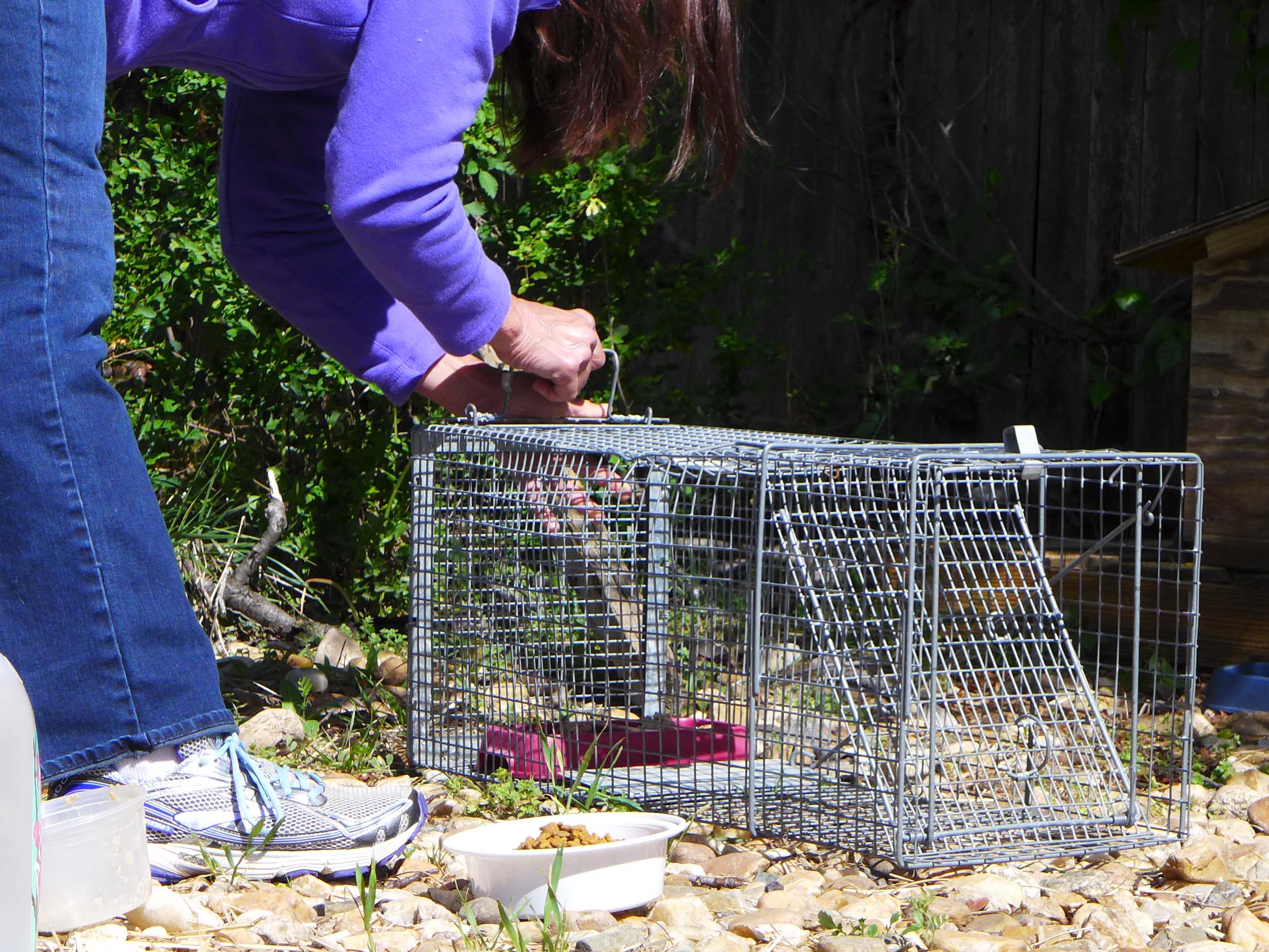
Catching the Cat
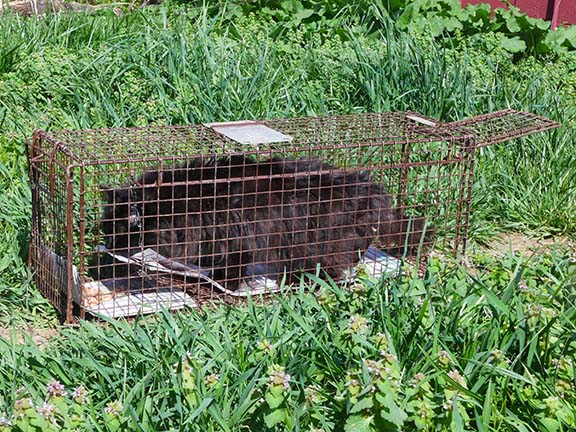
Spaying or Neutering
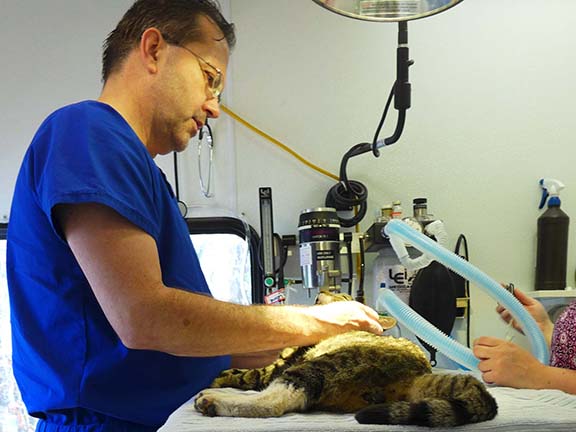
Return and Release
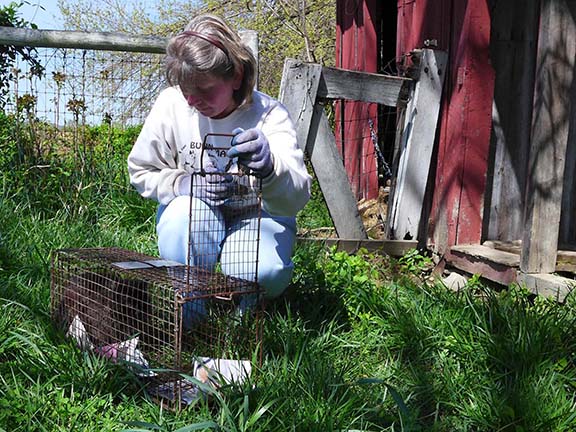
Home Sweet Home
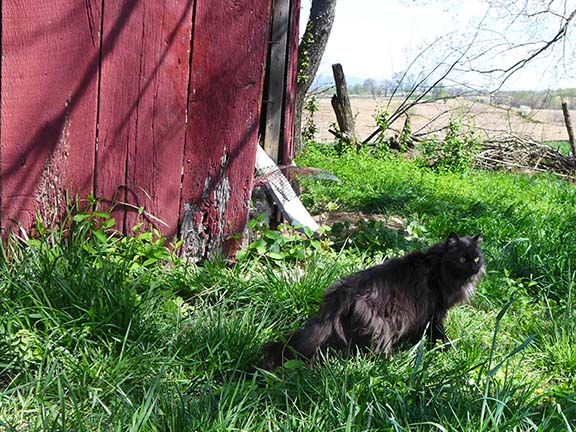
Great job, Liz. I hope you’ll continue to advocate for this issue and maybe even get into some “hands on” volunteer work when your time permits. We need people like you in the movement!
Martha
Well done, Liz! Thanks for focusing on this continuing problem.